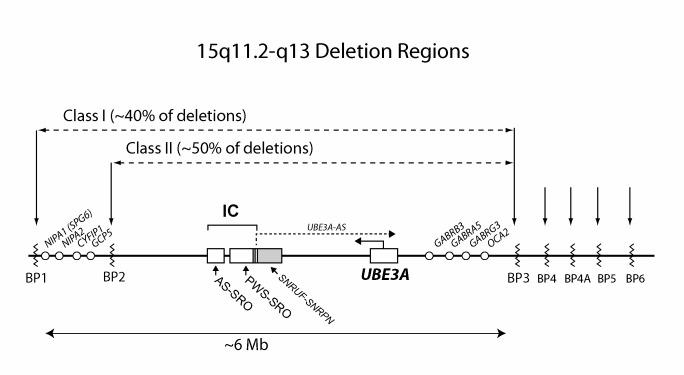Introduction
Angelman syndrome (AS) is a disorder that impacts one’s nervous system AS affects a single gene, causing the mutation or deletion of the imprinted gene UBE3A (1). This disorder is characterized by delays in the rate of one’s development, speech impairments, intellectual disabilities, and limb tremulousness.
Moreover, it can also bring movement and balance issues, sleep disturbances, and a uniquely positive demeanor defined by constant smiling, laughing, and excited reactions. Some affected persons also exhibit less frequent symptoms such as drooling, widely spaced teeth, heat sensitivity, fascination with water, and some sound-producing materials (for example, plastic). Developmental delay can occur with time and become noticeable in children from 6 to 12 months old. Other symptoms, such as speech impairment, become apparent later. Some young affected individuals may also be hyperactive. With time, the severity of some symptoms subsides, and older people may have better sleep patterns and be less active. However, speech impairment and intellectual disabilities rarely improve with age and stay on a similar level throughout one’s life.
Mechanisms of the Disease
In persons affected by this disorder, the UBE3A gene loses its usual functioning. A child usually inherits a copy of this gene from both parents, which allows them to function together in the growing body. However, if a copy from one’s mother is missing from the child’s body, then this individual develops AS. This gene is situated on the segment of the chromosome 15 of the mother. If this section is deleted or mutated, the individual does not inherit the necessary genes and develops AS. There can be some differences in the final results according to the person’s phenotype. Nevertheless, the majority of the most severe symptoms are to be expected in these people.
A mutated UBE3A gene can lead to the development of the Angelman syndrome in children depending on the parents’ inheritance of this gene (1). The process of the mother giving the mutated gene to her children results in them having this genetic disorder, while the father’s mutation does not result in children developing AS but inheriting the same mutation to transfer to the future generations. The amount of the deleted or mutated chromosome region 15, shown in the figure below (2), can determine the severity of the disorder’s outcomes. Thus, larger deletions may lead to more severe problems with language and increase the possibility of developing autistic traits. The majority of deletions that result in the development of AS are small initiating at the region BP1 or BP2 and finishing at BP3. Less frequently occurring deletions may be more extensive. However, all of them have to modify or eliminate the gene UBE3A in order to cause the disorder to occur.

Conclusion
Currently, a cure for AS is not available to affected individuals (1). Furthermore, there are no specific treatments of genes for parents, although the disorder’s mechanisms are well researched. Some potential therapeutic interventions can be introduced in theoretical studies and new researchers. Nevertheless, AS is mostly treated as an incurable condition and the focus is placed on helping affected persons to manage their lives with this disorder (1). The symptoms of AS such as seizures and hyperactive behavior are treated separately from the disorder’s cause to help individuals adapt to the daily lives. Pharmacological treatment allows children and adults to overcome difficulties with sleeping and other issues of AS. A therapeutic intervention to prevent the disorder’s development is needed to make AS treatable.
References
- Bird LM. Angelman syndrome: review of clinical and molecular aspects. The application of clinical genetics. 2014, 7:93-104.
- Dagli AI, Mueller J, Williams CA. Angelman Syndrome. In: Adam MP, Ardinger HH, Pagon RA, et al., editors. GeneReviews®. Seattle (WA): University of Washington; 1993-2018 [2018]. Web.